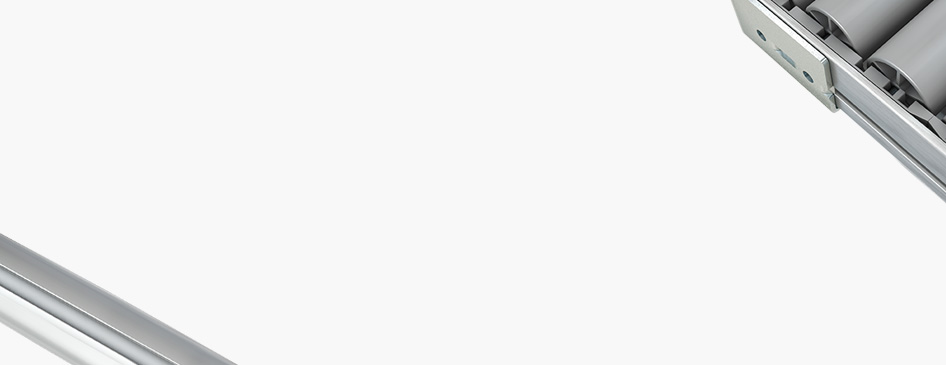
Seleccione uno
o más idiomas
0,1,3
- Alemán
- Inglés
- Chino
- Español
Ejes de velocidad constante
Los ejes de velocidad constante son ejes articulados. Estos aseguran que el movimiento rotativo y los torques sean transmitidos de manera uniforme, incluso cuando hay ángulos de flexión en uniones o cuando se generan velocidades angulares variables en los lados de salida y transmisión. Se usan, por ejemplo, con ruedas de vehículos que cuentan tanto con tracción como con dirección. El movimiento rotativo es transmitido de manera uniforme mediante una unión de velocidad constante (junta homocinética) para evitar las irregularidades en el eje motriz.
Los ejes de velocidad constante comprenden una unión de velocidad constante que puede, por ejemplo, ser conectada a dos ejes huecos mediante un balero. Los sellos como los sellos tipo fuelle protegen el empaque de grasa usado para lubricar la unión de velocidad constante.
Se usan diferentes tipos de unión en diferentes aplicaciones. Por ejemplo, se debe distinguir entre las uniones Rzeppa (balines en una jaula) y las uniones de ángulo amplio que permiten ángulos de flexión de hasta 50° (a menudo se encuentran en vehículos con transmisión delantera).
Gleichlaufwelle
Gleichlaufwellen gehören zu den Gelenkwellen. Sie ermöglichen eine Gleichförmigkeit der übertragenen Drehbewegung und der Drehmomente auch dann, wenn Biegewinkel am Gelenk oder unterschiedliche Winkelgeschwindigkeiten auf der Antriebs- und Abtriebsseite auftreten. Unter anderem werden sie bei angetriebenen, gelenkten Fahrzeugrädern verwendet. Über ein Gleichlaufgelenk (homokinetisches Gelenk) wird die Drehbewegung gleichförmig übertragen, sodass Unregelmäßigkeiten im Antriebsstrang vermieden werden können.
Gleichlaufwellen bestehen aus einem Gleichlaufgelenk, das beispielsweise über Kugellager mit zwei Hohlwellen verbunden ist. Dichtungen wie ein Faltenbalg schützen die Fettpackung, mit der das Gleichlaufgelenk geschmiert wird.
Die Art des Gelenks bestimmt den Einsatzbereich der Welle. Unterschieden werden beispielsweise Verschiebegelenke (Kugeln in einem Käfig) und Weitwinkelgelenke mit Beugewinkeln bis zu 50° (Einsatz oft bei Fahrzeugen mit Frontantrieb).
Constant velocity shaft
Constant Velocity shafts are articulated shafts. They ensure that rotary motion and torques are transmitted uniformly, even when Bending angles occur at the Joint or varying angular velocities are generated at the drive and output sides. They are used, for example, with vehicle wheels that are both driven and steered. Rotary motion is transmitted uniformly via a constant velocity joint (homokinetic or CV joint) so that irregularities in the drive train can be avoided.
Constant velocity shafts comprise a constant velocity joint that could, for example, be connected to two hollow shafts via a ball Bearing. Seals such as a bellows-type Seal protect the grease packing used to lubricate the constant velocity joint.
Different types of joint are used in different applications. For example, a distinction is made between Rzeppa joints (balls in a cage) and wide-angle joints that permit bending angles up to 50° (often found on vehicles with front-wheel drive).
等速传动轴
等速传动轴是铰接轴。它们保证了旋转运动和扭矩可被均匀传递,即使节点处出现弯曲角度或在驱动器和输出端上产生不断变化的角速度。例如,它们在既传动又转向的车轮上的应用。等速节点(相同动能或球笼等速连接器)可均匀传递旋转运动,从而避免了传动过程中的不平衡。
等速传动轴包括等速节点,例如可通过球轴承与两个空心轴连接。密封件如波纹管式密封可以保护润滑等速节点的油封。
不同类型的节点具有不同的应用。例如球笼接头和广角接头的区别在于后者允许的弯曲角度可达到 50°(通常在前轮驱动的车中使用)。
近义词
匀质节点
